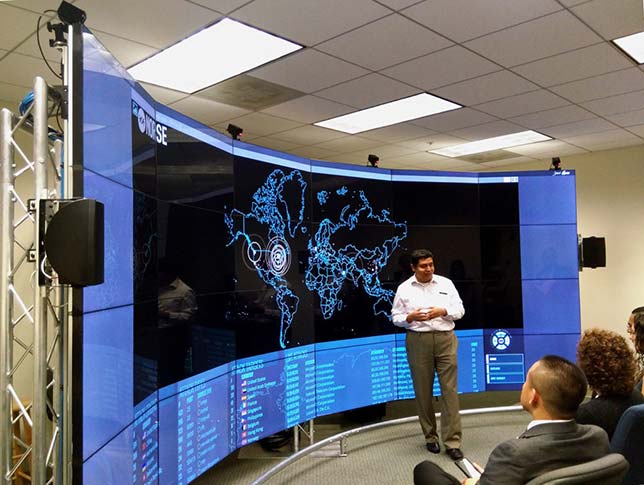U Maryland Baltimore County Plugs in Hybrid Reality Wall
- By Dian Schaffhauser
- 12/04/17

The University of Maryland Baltimore County last month cut the ribbon on a new immersive "hybrid reality" lab for working with 3D, virtual reality and augmented reality. The university said the technology will facilitate new research efforts with visual exploration of data for biology, math, engineering, visual arts and digital humanities while also serving as a tool for studying the potential of the medium itself.
"π²" — pi squared — as it's called, features a curved wall with 50 million-pixel resolution. The wall stands 15 feet tall by 20 feet wide. It was made from multi-column, thin-bezel, stereo-capable LCDs and is intended to accommodate a variety of uses: immersion, hybrid reality, high resolution, large field of view, large space and size, body-centric human-computer interaction and support for data fusion.
The university worked with Mechdyne, a company founded in the late 1990s by two graduates of Iowa State University who had both worked in that institution's virtual reality applications center.
"We would like to make large and complex data sets more intuitive. We want multiple people to be exposed to the same data to allow collaborative interaction with that data," said Don Engel, assistant vice president for research, in a press release. "We have a lot of interest from different departments wanting to utilize the solution. The computer science department wants to look at cyber security; the visual arts department is seeing unique collaboration between the imagining center and theatre department; and biochemical engineering is working to find and fix environmental problems — like the impacts of water contamination."
About the Author
Dian Schaffhauser is a former senior contributing editor for 1105 Media's education publications THE Journal, Campus Technology and Spaces4Learning.